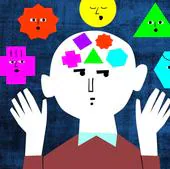What is REM sleep and why should you care about it?

There is nothing better than “sleeping soundly.” An expression that has lost its ancient prison origins, as it referred to privileged prisoners who could spend the night without shackles on their feet, but which is now interpreted as an image of complete relaxation. Go to bed and surrender to Morpheus until the next day. But the matter is more complicated than it seems. At the moment of greatest relaxation of the body during sleep, many events occur in our brain. And they are very important.
This is the stage of REM sleep, which stands for rapid eye movement (REM), a curious phenomenon that everyone can observe in a person sleeping soundly. Or “like a log,” if you like. Scientific knowledge that sleep is divided into several phases is relatively recent and dates back to the mid-20th century. Previously, the question was of course of interest, but the approach was different. “Let’s think about Freud, who focused his attention on dreams, dreams. I believed that they could be analyzed and that their interpretation could form the basis of treatment,” says Carlos Egea, head of the department of pulmonology and head of the sleep unit at the Integrated Health Organization (OSI) of Alava.


“Our grandmothers thought that sleep meant going to bed and that’s it, just relax.” But no. Scientific research into sleep has shown that it is divided into several stages or phases. REM sleep is a small part of overall sleep, a cycle “that also repeats several times throughout the night,” Egea notes. It can be thought of as a train passing several times, “consisting of a number of carriages.” After falling asleep, “the first machine will be light sleep, the second will be deep sleep, and the third will be REM sleep. And this is repeated three to six times every night.
“When we focus on one of the machines, REM, say the one in the dining room, steps in that machine take up 20 to 25 percent of all sleep.”
“REM sleep predominates, starting halfway through the night, to varying degrees,” says Egea. “And this is also called paradoxical sleep.” Where is the paradox? At this stage the body is completely relaxed. He is, so to speak, physically “deactivated.” “But if you look at the electroencephalogram of a person sleeping in this phase, you will see that it is the same as if he was awake. And this is because sleep is not a passive process, but rather an active process.
Sorting memories between dreams
The body is “off”, but the brain is “on”. What to do? Among other things, memory consolidation. “REM sleep is where memories are organized. The brain works like a librarian, organizing what we have stored throughout the day into temporary memory. The “librarian” decides what to keep and what to remove, and distributes it throughout the cerebral cortex.
“And it’s also a time for dreaming, for ‘cinematic’ dreaming.” In the previous phase there are also dreams, but they are abstract. Those related to REM sleep are “cinema.” Including nightmares. Why do dreams occur? “Teach your brain to avoid risky situations. When you wake up and remember the dream, it is because you have caught your brain developing a survival situation.
The entire sleep cycle “is an automatic process” but can be affected by illness or medications. Sleep behavior disorders during REM sleep, when it is deeper, may be a warning symptom of future neurodegenerative diseases.
During REM sleep, the body is relaxed. It is a “safety” system that “prevents brain activity from being converted into movement.” This prevents us from falling out of bed when trying to escape, for example if we dream that we are being chased by a bear. Alert systems are still in place though. “Any sudden noise can instantly jolt you from sleep to wakefulness. “This is a survival mechanism that, in cave times, prevented animals from eating us while we slept.” Like a bear, I’ll give you an example.